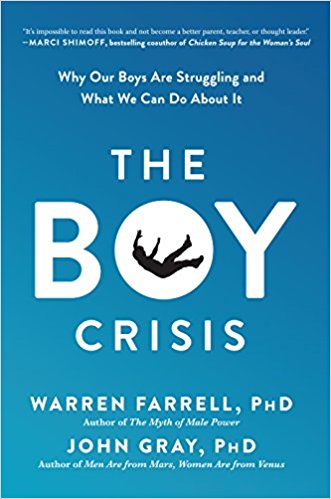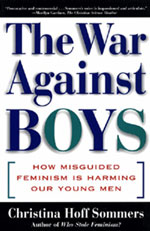Independent Women's Forum
One in Four? Rape myths do injustice, too.
Independent Women's Forum, U.S.A., by Carrie Lukas, April 27, 2006
One in four women is the victim of rape or attempted rape.
This familiar statistic comes to mind as the rape indictment of two Duke University lacrosse players dominates national news. It may be a fitting backdrop for this scandal, not just because the statistic reminds us that all women are vulnerable to this terrible crime, but also because the evidence behind the number is dubious.
"One in four" has been repeated so often on college campuses and in the media that many people accept it without question. Few know how it was calculated. Few ask, because asking implies questioning its veracity, and, in this post-feminist era, it's taboo to question sex-crime data or the claims of any alleged rape victim.
Christina Hoff Sommers of the American Enterprise Institute delved into these uncomfortable waters in Who Stole Feminism. The one-in-four statistic, she found, was derived from a survey of 3,000 college women in 1982. Researchers used three questions to determine if respondents had been raped: Have you had sexual intercourse when you didn't want to because a man gave you alcohol or drugs? Have you had sexual intercourse when you didn't want to because a man threatened or used some degree of physical force... to make you? And, have you had sexual acts...when you didn't want to because a man threatened to use some degree of physical force... to make you?
Based on women's responses, researchers concluded that 15 percent of women surveyed had been raped and 12 percent had experienced an attempted rape. Therefore, 27 percent of women more than one in four were either the victims of rape or attempted rape. This is the origin of the one-in-four statistic.
Yet other data from that same survey undercut its conclusion. While alcohol surely plays a part in many rape cases, the survey's wording invites the label of rape victim to be applied to anyone who has ever drank too much, had a sexual encounter, and then regretted it later. In addition, only 25 percent of the women whom researchers counted as being raped described the incident as rape themselves. The survey found that four in ten of the survey's rape victims, and one in three victims of attempted rape, chose to have intercourse with their so-called attacker again. The survey researchers scratched their heads as to why these women would return to their attackers, but Sommers asks the obvious question: "Since most women the survey counted as victims didn't think they had been raped, and since so many went back to their partners, isn't it reasonable to conclude that many had not been raped to begin with?"
Correcting for the biases in the original survey yields a radically different picture of the prevalence of rape in America. Subtract the women identified by the alcohol and drug question and those who didn't think they had been raped, and total victims fall to between 3 and 5 percent of the women surveyed. This remains an alarmingly high number, but significantly less alarming than the one-in-four figure.
It certainly is possible that this revised estimate understates the frequency of rape women may be reluctant to admit having been violated even in an anonymous survey. Another study, for example, found that one in eight American women about 12 percent had been victimized.
Regardless of the exact figure, rape is a terrible crime too prevalent in our society. Great efforts should be made to reduce the number of victims and bring perpetrators to justice. Allegations of rape, including those at Duke, must be taken seriously and investigated fully.
In the past, victims of rape were made to feel that the crime was their fault. Many women around the world still suffer this bias. Today in the United States, the pendulum has swung too far in the other direction. A man accused of rape often is convicted in the court of public opinion without evidence.
At Duke, a woman has accused three men of raping her. Two have been indicted. We know the names of the accused; we've seen their pictures; their lives will never be the same. We've learned terrible things about the Duke lacrosse players: One sent a chillingly misogynistic email, and there are reports of racial slurs. One is standing trail for a previous assault charge. This behavior deserves condemnation, and we as a society should consider why these young men have adopted this behavior.
Perhaps the evidence will show they also committed the heinous crime of rape. If so, they will be and they should be severely punished. Yet the media so quick to sensationalize the accuser's account and condemn the lacrosse players now is revealing facts suggesting that the accused might be innocent of this crime. Our legal system presumes innocence until guilt is proven. The rest of us, watching on TV and chatting at the watercooler, should try to do the same.
- Carrie Lukas is vice president for policy and economics at the Independent Women's Forum and the author of The Politically Incorrect Guide to Women, Sex, and Feminism.

Why boys are in trouble
Boys have been painted as the bad guys in the push to encourage girls to succeed, leaving many young men feeling confused and alienated, wondering what they did wrong
The Associated Press
January 5, 1999
According to psychologist and author William Pollack, 'sports are the one arena in which many of society's traditional strictures about masculinity are often loosened, allowing boys to experience parts of themselves they rarely experience elsewhere.'
When Harvard Medical School psychologist William Pollack administered a test to a group of 150 teenaged boys a few years ago, the results were shocking.

The Boy Crisis Book
The Boy Crisis: Why Our Boys Are Struggling and What We Can Do About It
Authors- Waren Farrell PhD and John Gray PhD
What is the boy crisis?
It's a crisis of education. Worldwide, boys are 50 percent less likely than girls to meet basic proficiency in reading, math, and science.
It's a crisis of mental health. ADHD is on the rise. And as boys become young men, their suicide rates go from equal to girls to six times that of young women.
It's a crisis of fathering. Boys are growing up with less-involved fathers and are more likely to drop out of school, drink, do drugs, become delinquent, and end up in prison.
It's a crisis of purpose. Boys' old sense of purpose-being a warrior, a leader, or a sole breadwinner-are fading. Many bright boys are experiencing a "purpose void," feeling alienated, withdrawn, and addicted to immediate gratification.
So, what is The Boy Crisis? A comprehensive blueprint for what parents, teachers, and policymakers can do to help our sons become happier, healthier men, and fathers and leaders worthy of our respect. Read More ..

Health Canada Publication
The Invisible Boy: Revisioning the Victimization of Male Children and Teens
"... the existence of a double standard in the care and treatment of male victims, and the invisibility and normalization of violence and abuse toward boys and young men in our society.
Despite the fact that over 300 books and articles on male victims have been published in the last 25 to 30 years, boys and teen males remain on the periphery of the discourse on child abuse.
Few workshops about males can be found at most child abuse conferences and there are no specialized training programs for clinicians. Male-centred assessment is all but non-existent and treatment programs are rare. If we are talking about adult males, the problem is even greater. A sad example of this was witnessed recently in Toronto. After a broadcast of The Boys of St. Vincent, a film about the abuse of boys in a church-run orphanage, the Kids' Help Phone received over 1,000 calls from distraught adult male survivors of childhood sexual abuse. It is tragic in a way no words can capture that these men had no place to turn to other than a children's crisis line."
American Psychological Association
Dating Violence Statistics in the United States
Nearly one in 10 girls and one in 20 boys say they have been raped or experienced some other form of abusive violence on a date, according to a study released Sunday at the annual meeting of the American Psychological Association.
![]()
The mean T-shirt: From the Stupid Factory
Todd Goldman says his popular boy-bashing T-shirts are simply funny.
So why are retailers having second thoughts? Read More ..

Why boys are in trouble
Boys have been painted as the bad guys in the push to encourage girls to succeed, leaving many young men feeling confused and alienated, wondering what they did wrong
The Associated Press
According to psychologist and author William Pollack, 'sports are the one arena in which many of society's traditional strictures about masculinity are often loosened, allowing boys to experience parts of themselves they rarely experience elsewhere.'
When Harvard Medical School psychologist William Pollack administered a test to a group of 150 teenaged boys a few years ago, the results were shocking.

